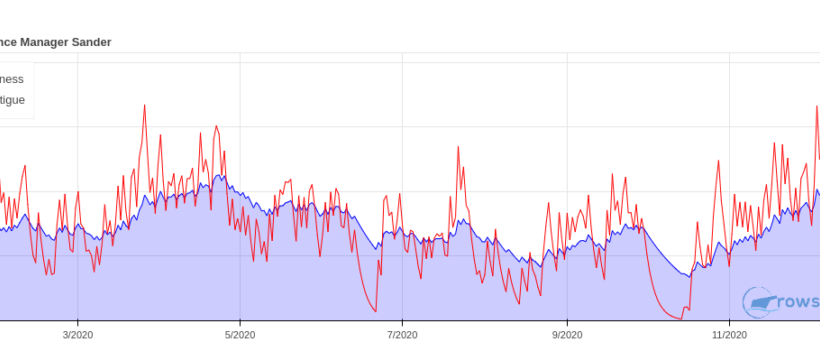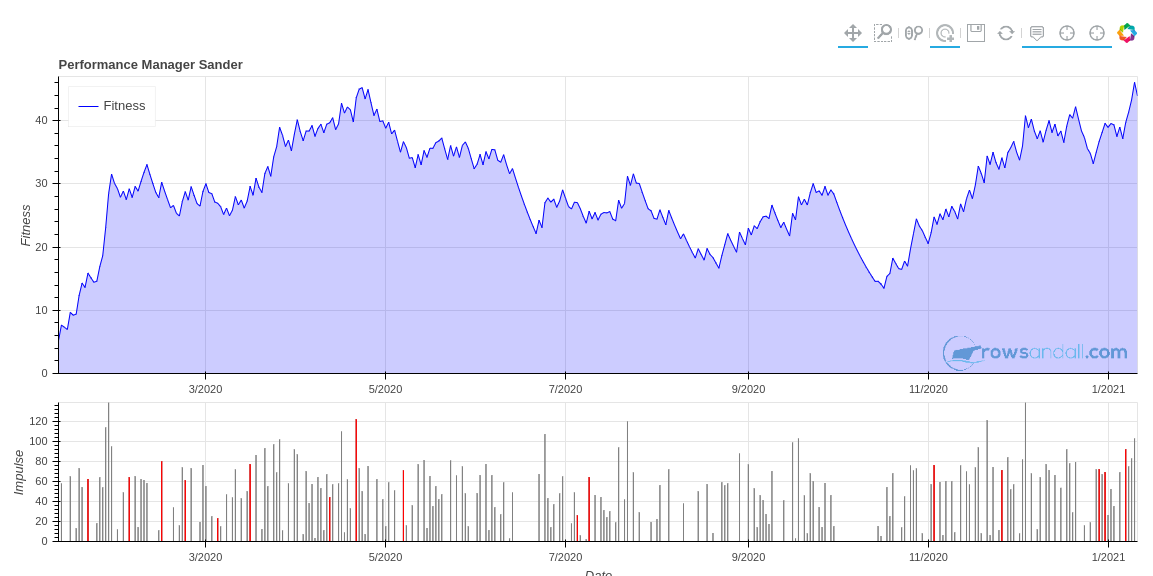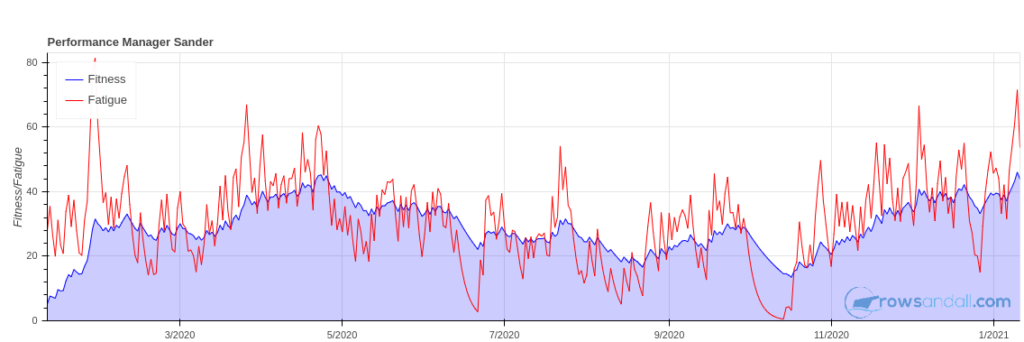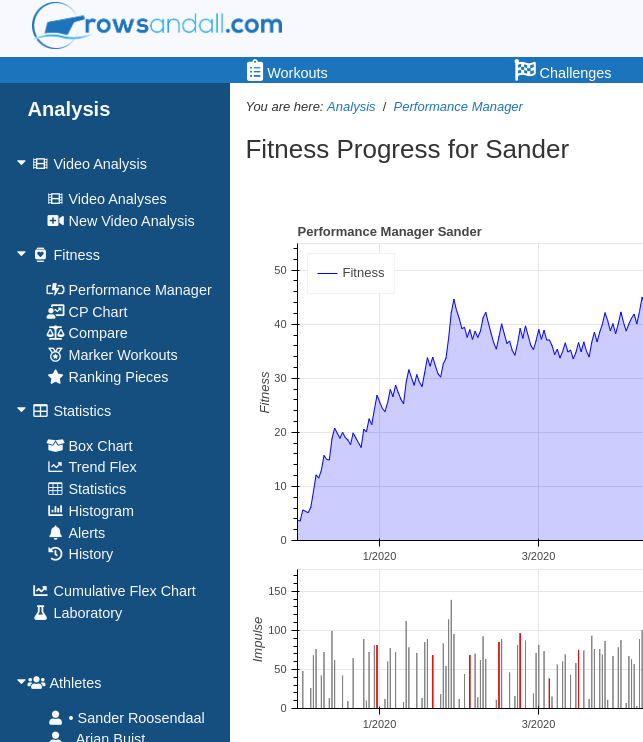
One of the missing pieces from a complete implementation of quantified training for rowing is the Performance Manager. The Performance Manager shows you a model for your fitness and fatigue, based on models for human performance.
The basics are explained very well on this page. Basically, we take models for human performance that have been described and verified well in scientific literature, add the decades of experience that cyclists have gained with these models and apply them to rowing.
The essence of all models is that all training stress induces two effects:
- Fatigue – a negative effect on your performance which disappears in a few days
- Fitness – a positive effect on your performance (from recovery and/or supercompensation)
The sum of these two effects determine your performance (or “form”). It makes sense intuitively. While there are various models with increasing levels of sophistication, we have implemented the common “TSB model”. As each individual is different in their response to training, diet, rest or other factors, there is little additional benefit in making use of more complex models.
But enough theory, let’s jump right in and look at the Performance Manager chart. Here’s one for myself.

This is my Performance Chart. The top chart shows my modeled fitness for the past 365 days. I am assuming a fitness, fatigue and form of 0 on day 0. Of course, this is not correct, but the model quickly balances out after a few weeks of training, so if I ignore the first the absolute values for January, I will be OK.
The bottom part shows the training impulses. Each bar is a day with training, and the height of the bar is the impulse, which is calculated from session duration and it’s power and heart rate data.
So what does the chart tell. It shows that my fitness reached a maximum in the last week of April. It shows that during the first lockdown (March/April), my frequent home erg sessions paid off.
Indeed, I did a pretty good performance on the first “race” of the season, a local 6K that we organized between members of our club, for lack of any other races.
Early May, I was forced to reduce my training intensity, because I had a busy period at work. Fitness plateaued at a new, lower level. A trip to The Netherlands in June shows as a drop in fitness. In August, I started a new job, and after a few weeks in the new job, I managed to find a new routine, and gradually increase fitness until the beginning of August, where I was forced to spend a week in quarantine (and didn’t do any workouts). After that low, I have been steadily building my fitness, with a controlled reduction over the holiday break.
Even though this is just a model, it’s pretty accurate. It’s also pretty much in line with similar charts that you can make in Training Peaks, Strava, SportTracks, or on Golden Cheetah.
Having it on Rowsandall.com, I can immediately see how my workouts are affecting my fitness. For this to be accurate, it’s important of course to have all your workouts on Rowsandall.com, not only the rowing workouts. Luckily, it is very easy to automatically sync Rowsandall.com with Polar and Garmin equipment, and with data from Strava or SportTracks.
Looking at the chart gives me great motivation to keep working on my fitness.

The Performance Manager can be found through this link: https://rowsandall.com/rowers/performancemanager/
You can also find it by logging in to your account on Rowsandall.com, then going to the Analysis page through the top menu, and click on the Performance Manager section. It’s also in the menu on the left.
Marker Workouts
You might have noticed that some of the workouts are marked with a red bar in the Impulse chart. These are Marker Workouts, workouts that represent a special achievement in your training (a particularly hard session, a race, the first workout after a long absence, etc), and they can be set both manually and automatically by our special algorithm. More about that in a separate blog post.
Rowing with Power
The performance chart is best built from both Heart Rate and Power data. To achieve that, you need to have power data for your rowing workouts. On the indoor rowing, this quantity is readily available, but on the water, you have to invest in a separate power meter. The NK Empower Oarlock is currently the only practical, commercially available option. We do hope that more options will become available soon.

